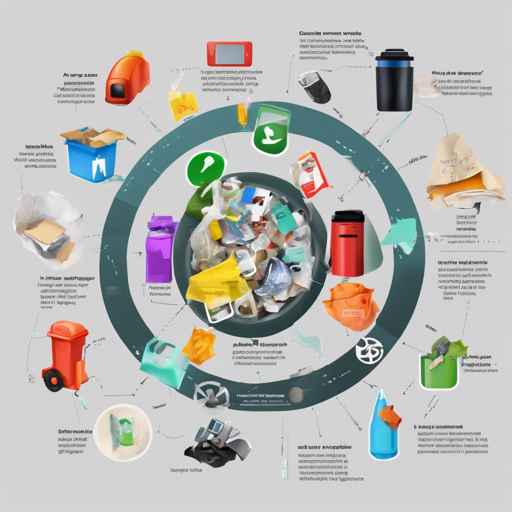With growing environmental concerns, efficient waste management is more crucial than ever. Fortunately, with advancements in artificial intelligence, we are now capable of building systems that can accurately classify garbage into different types based on images. In this blog, we will delve into the workings of such a system that boasts an impressive accuracy of about 93%!
Understanding the Basics of Garbage Detection
The project we’re discussing uses a robust image classification model that distinguishes between various types of garbage items. This system is designed to make the decision-making process for waste disposal much easier and more efficient.
The Classification Report
A classification report provides insight into the model’s performance across different categories. For our garbage classification system, here are the metrics:
precision recall f1-score support
battery 0.9466 0.9484 0.9475 2130
biological 0.9725 0.9812 0.9769 2130
brown-glass 0.9609 0.9690 0.9649 2130
cardboard 0.9920 0.9347 0.9625 2130
clothes 0.9469 0.9789 0.9626 2130
green-glass 0.9231 0.9869 0.9539 2130
metal 0.8810 0.9038 0.8922 2130
paper 0.9215 0.9427 0.9320 2130
plastic 0.8860 0.6643 0.7593 2130
shoes 0.9383 0.9854 0.9613 2130
trash 0.8643 0.9718 0.9149 2130
white-glass 0.9049 0.8709 0.8876 2130
accuracy 0.9282 25560
macro avg 0.9282 0.9282 0.9263 25560
weighted avg 0.9282 0.9282 0.9263 25560
Utilizing the precision, recall, and f1-score metrics, the results indicate that the model performs exceptionally well across various types of garbage.
How to Implement Garbage Detection
This garbage detection system can be thought of as a highly skilled restaurant staff member who knows how to categorize various foods on a menu. Just as a waiter recognizes dishes based on their appearance and ingredients, our model scans images of waste and assigns them into designated categories such as battery, plastic, or cardboard.
- Step 1: Collect a diverse dataset of garbage images.
- Step 2: Preprocess the images for consistent formatting.
- Step 3: Train your image classification model using frameworks such as TensorFlow or PyTorch.
- Step 4: Assess the model’s performance through validation datasets.
- Step 5: Deploy the model for real-time garbage classification.
Troubleshooting Common Issues
While implementing an image classification system, you may encounter several challenges. Here are some troubleshooting ideas:
- Ensure your images are sufficiently diverse; lack of variety can lead to biased models.
- Check your data preprocessing steps to ensure you’re feeding the model clean and well-formatted images.
- Adjust hyperparameters if the model does not yield satisfactory results after initial training.
- If performance metrics are inconsistent, consider collecting more data or augmenting your existing dataset.
- For more insights, updates, or to collaborate on AI development projects, stay connected with fxis.ai.
At fxis.ai, we believe that such advancements are crucial for the future of AI, as they enable more comprehensive and effective solutions. Our team is continually exploring new methodologies to push the envelope in artificial intelligence, ensuring that our clients benefit from the latest technological innovations.
Conclusion
Detecting garbage types through image classification is not only a step towards better waste management but also a remarkable example of how AI can be utilized for environmental sustainability. With further improvements and community contributions, we can make significant strides in this area!

